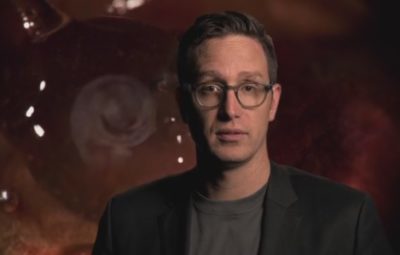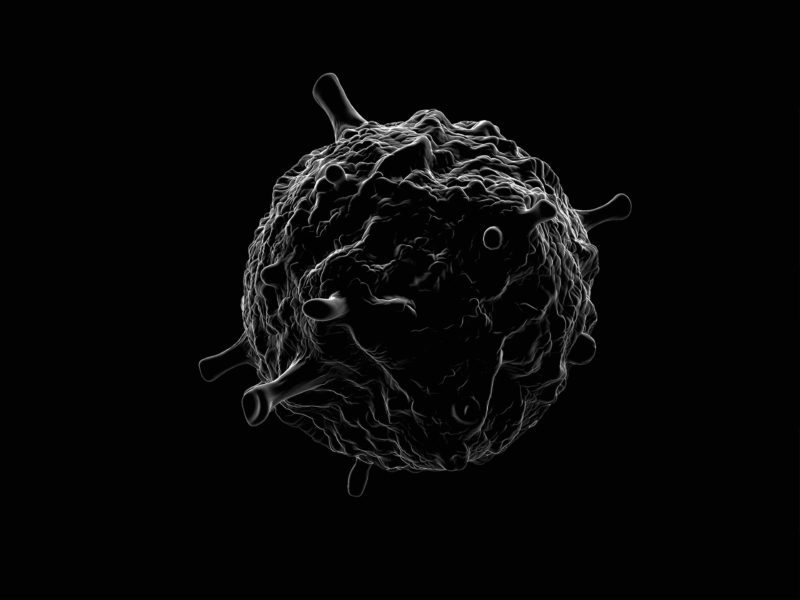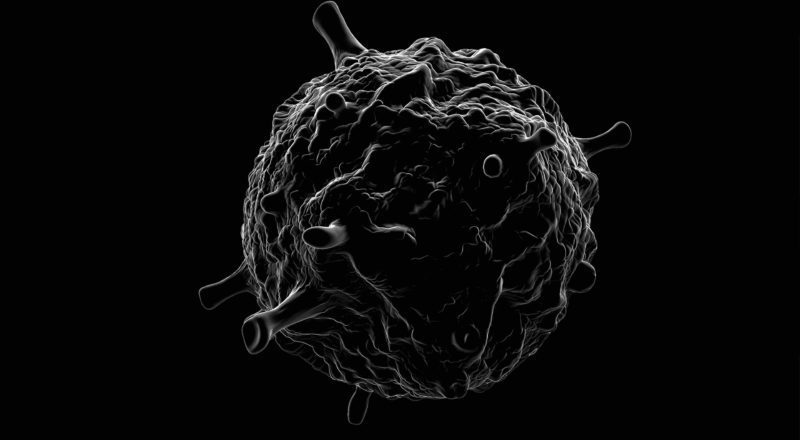INTERVIEW: Dr. Dan Riskin enters the fascinating, gross world of parasites on ‘Monsters Inside Me’

Monsters Inside Me, the Animal Planet series airing new episodes Thursdays at 9 p.m., follows a variety of gross and engaging medical cases around the world and how doctors struggle to diagnose the symptoms of invasive parasites and microscopic disturbances that can lead to some nasty realities. At the center of the series, which has been a mainstay on the network for years, is Dr. Dan Riskin, a biologist who serves as host of the show. He holds the hand of the viewers as they head down some dark and unsettling corridors in the annals of science.
On the new season of Monsters Inside Me, the cases are every bit as gruesome as previous seasons. A woman in Florida begins gaining weight unexpectedly and experiencing blurry vision. Her diagnosis: a breast implant that has started growing mold. A Tennessee man has pain in his left hand that won’t go away. His diagnosis: a barnacle that has attached itself to his hand.
It’s all in a day’s work for the Monsters Inside Me team.
Recently Hollywood Soapbox interviewed Riskin about things that go bump under the skin, how the team finds the grossest stories and what happens when a case doesn’t have a parasitic villain.
On the new season of Monsters Inside Me …
“I think people know what to expect. They expect to be grossed out, and we deliver. What’s great about these things is that it’s just always such a mystery to try and figure out what is causing it. There are a couple of stories in this season especially where … it’s just amazing to me that they figured it out, that they cracked the case.
“There’s a story about a little girl who was on a cruise ship and then got very, very sick. They had some ideas of what it might be, but the mom was persistent that she didn’t think that was it. When they got to land and they went to a hospital there, the doctors were initially saying the same thing that they had been saying on the boat, but it just didn’t match up.
“So you have a story where the mom really being persistent that something is not right, and the doctors listening to that mom, and then really do their homework and really digging. It turns out her issue is she had taken a necklace … when the cruise ship had stopped at one of the ports. Her mom had bought a nice necklace, and the kid had put it in [her] mouth.
“Nobody knew that it was these incredibly dangerous beads. They’re actually seeds from a plant, and that plant protects its seeds from animals that would eat them by making them extremely poisonous. Now as a necklace it’ll never hurt you. Even if you were to take one of those beads and eat it, you might be OK. It might go right through your body without opening up and sending those poisons into your body, but the little kid was chewing on it and got this poison.”
On finding cases and presenting them on television …
“Now we’re in a position where anytime something gross happens we get a million emails from people. … Every once in a while I get an email from a random person with an attachment. I’m always like, uh oh. Let’s see what this picture is. It’s their belly or something, and you’re like, oh, man I’m so glad I’m not an actual doctor that has to deal with these cases.
“Sometimes it’s just vulgar. As a biologist I think they’re fascinating, but if I have a person who’s got puss coming out of a hole, I don’t want to be the one plugging it in. Of course, it’s always happy when these cases end up being happy endings where the victim survives, but there are, of course, some dark stories where especially when it’s a kid and they don’t survive. It really gives you pause. It’s not all fun and games. It’s actually quite serious stuff.
“So, yeah, the stories come from all over. They come from people that find them for us. We have a great team that’s always scouring for them. Often it’s a case that we’ve known about for some time, and we just haven’t figured out how to tell the story.”

On the challenges of this season’s premiere episode …
“The best example from this season is the case of the botflies in the scrotum, our very first episode, which I know has already aired, but I mean there’s another whole story there about the team knowing that there’s this amazing story that people will just die to hear. But how do you tell it on TV without being graphic, without being too gratuitous? The whole way that our show works is to give visualizations. If we don’t have actual footage from the wound itself from the medical file or from the victim’s own pictures, we make expensive computer graphics. …
“For a long time, we just didn’t know how we were going to tell the story, and finally this season, with great conversations with Animal Planet, who, of course, are totally supportive and wanted to find a way to make this story work, we found a way to deal with it.”
On how the series can teach a lesson or two …
“It does become a bit of a cautionary tale. If you’re going to go somewhere tropical or wherever, it doesn’t hurt to spend a little time on Wikipedia finding out what people get there. Certainly when I had my botfly experience, the minute my mosquito bite started to grow, I knew what it was because I was worried about botflies before I ever went to Belize. I knew that that was something I was risking.
“I knew about the risk of malaria. I knew about the risks of other things, so when a mosquito bite starting growing, I knew exactly what it was. Knowledge is power. …
“This show is used by a lot of professors who are trying to get their microbiology students to connect the stuff that they’re learning in their textbooks with real-world examples, and because the show is so accurate, because the show does such a careful job with the visualizations, professors can rely on it. The information in the episode is all valid from their perspective. We don’t exaggerate. We don’t make the graphics more disgusting than they really probably were if you were there. …
“We’ve become a tool for these professors to try to get these students engaged. I’ve actually — it’s a handful of times — but I have had people tell me that they are in microbiology because of Monsters Inside Me.
“It’s easy to dismiss it. I think they call it docu-horror is one of the things that it’s been called. You can sort of dismiss it as entertainment, but it really does open up a window on a fascinating part of science that you can spend a career in. It’s kind of exciting to me that it is showing it to people that do want to do this, that are becoming microbiologists that are maybe not just looking out for themselves and will be saving other lives in the future.”
On needing to find the villain in a parasitic case …
“For us, we need to know who the villain was in the story for us to tell the story well. In the cases where somebody got a strange infection and then they never didn’t really know what it was, those are a bit dead-end for us.
“The way we like to tell the story is … you’ve got this illness. Usually there’s a misdiagnosis early on. You think it’s some benign infection or something like that, or you just get an antibiotic or something. And then you find out maybe it takes a turn for the worse, or it presents some different symptom that you weren’t expecting. And then you realize you have the wrong hypothesis, and then they go back and find the right hypothesis. But telling the story of what’s going on and solving that is a big part of it for us. In the cases where we don’t know the solution, we can’t really tell the story the way we want to.”
By John Soltes / Publisher / John@HollywoodSoapbox.com
Monsters Inside Me airs new episodes Thursdays at 9 p.m. on Animal Planet. Click here for more information.


obsessed with this show!!!
Hello there!
I am Helena Francisco, I leave in South Africa but I come from Angola.
In 2014 I was diagnosed with Henia or maybe be cist but the Doctor does not how to explain what really is going on with me. They prescribed some tablets that does not make any effects at all. Then I try an other Doctor who says I have something inside my annuas. I stopped going to visit the doctors for that kind of desease until now.
Hello my husband has something going on with him that is attacking his skin and destroying it tremendously it feel like something is crawling in his skin on the inside and out. He said it’s making his skin sticky and sticking him. It really bothers him at night that cause him not to get any sleep. He picks at his face and gentials all day.He needs some help to find out what’s going on the dermatologist said it’s a fungus . I need some help to find out what’s going on
How can I get in touch with Dr Riskin?? Plz and ty